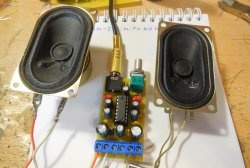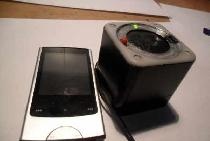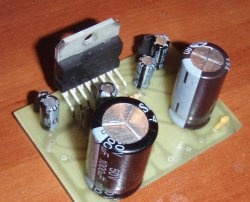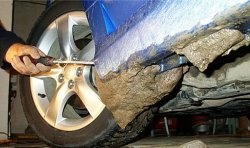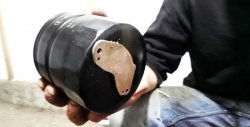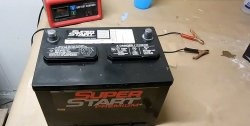4 parts and 40 W x 2 power output Karl! This is a godsend for car enthusiasts, since the amplifier is powered by 12 Volts, the full range is from 8 to 18 Volts. It can be easily integrated into subwoofers or speaker systems.
Everything is accessible today thanks to the use of modern element base. Namely the chip - TDA8560Q.
By the way, you can buy it for mere pennies here - TDA8560Q
This is a PHILIPS chip. Previously, the TDA1557Q was in use, on which you can also build a stereo amplifier with an output power of 22 W. But it was later modernized by updating the output stage and the TDA8560Q appeared with an output power of 40 W per channel. Also similar is the TDA8563Q.
Car amplifier circuit on a chip
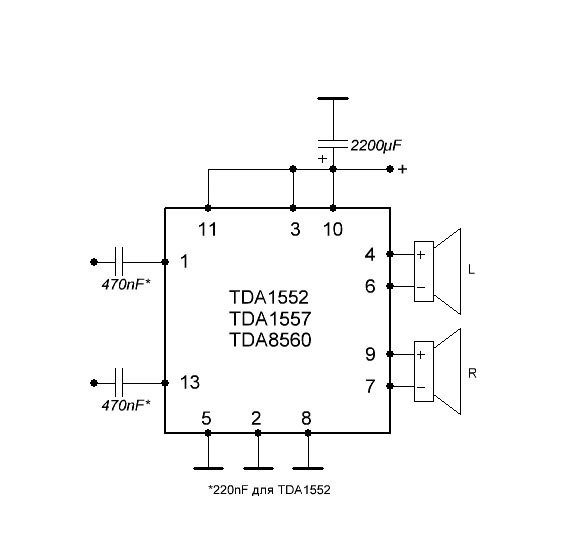
The diagram shows a microcircuit, two input capacitors and one filter capacitor.The filter capacitor is specified with a minimum capacity of 2200 uF, but the best solution would be to take 4 of these capacitors and parallel them, this will ensure more stable operation of the amplifier at low frequencies. The microcircuit must be installed on a radiator, the larger the better.
Building a simple amplifier

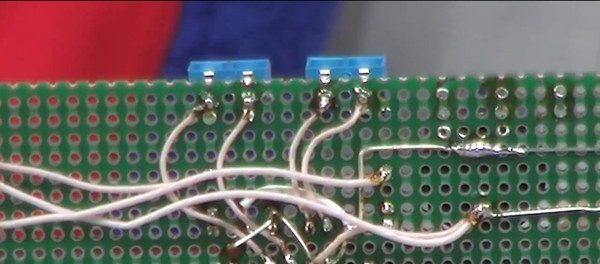
It is also possible to increase the number of components in the circuit that increase reliability during operation, but not fundamentally.
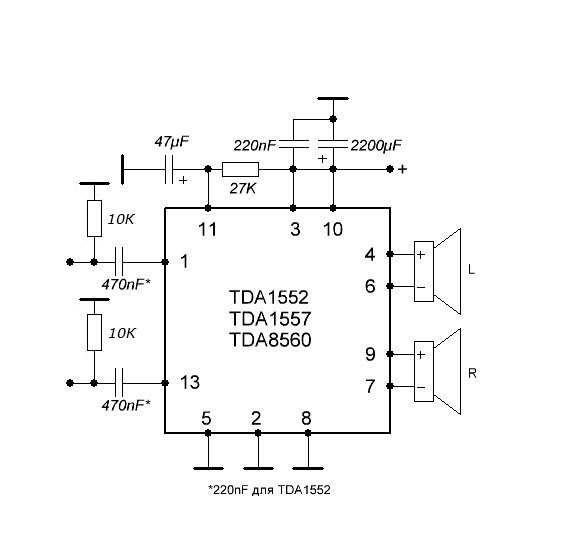
Five more details have been added here, I’ll explain why. Two 10K Ohm resistors will remove the hum if there are long wires going to the circuit. A 27 K Ohm resistor and a 47 uF capacitor provide a smooth start of the amplifier without clicks. A 220 pF capacitor will filter out high-frequency noise traveling along the power wires. So I recommend modifying the circuit with these nodes; it won’t be superfluous.
I would also like to add that the amplifier develops full power only at a 2 Ohm load. At 4 Ohms there will be somewhere around 25 W, which is also very good. So our Soviet acoustics will be rocked.
Low-voltage, single-polar power supply provides additional advantages: it can be used in car speakers, but at home it can be powered from an old computer power supply.
The minimum number of components allows you to build in an amplifier to replace an old one that has failed on a microcircuit of other brands.


